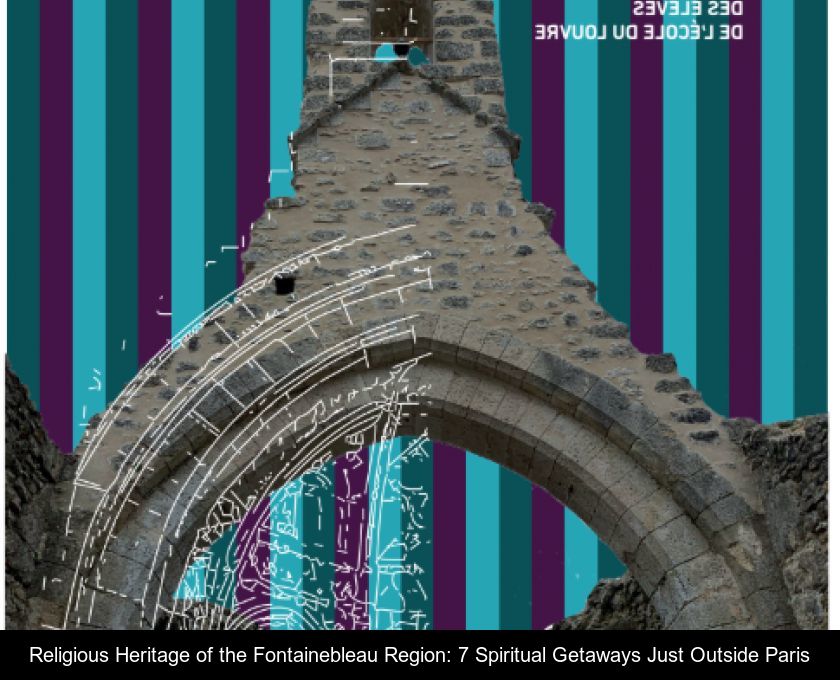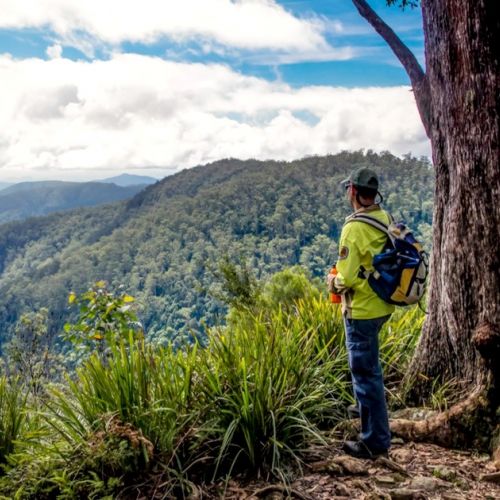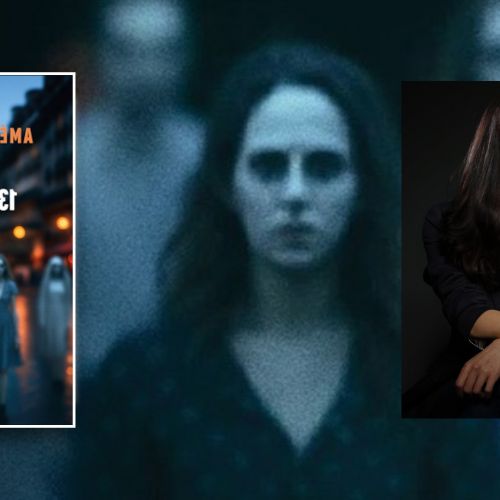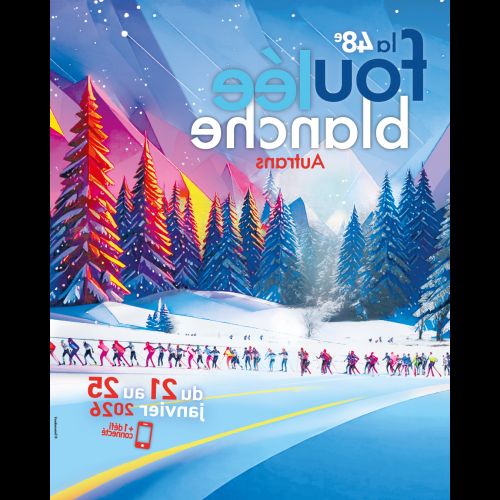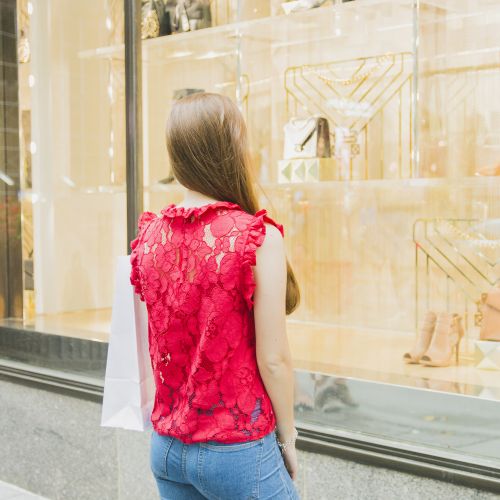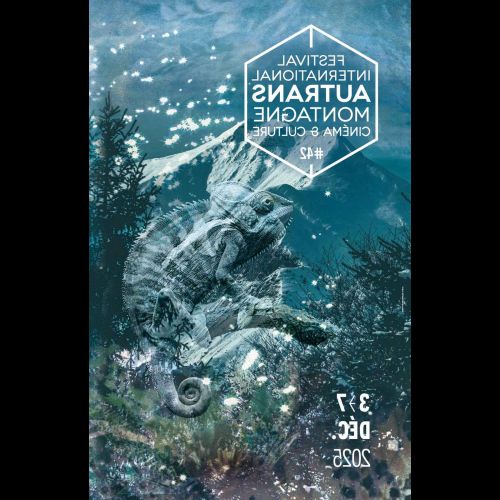Religious Heritage Of The Fontainebleau Region: 7 Spiritual Getaways Just Outside Paris
Between the majestic avenues of the forest and the royal facades of the castle, the Fontainebleau region hides another treasure: a mosaic of churches, chapels, and abbeys that tell a thousand years of sacred history. Follow the guide!
A haven of nature & spirituality south of Paris
Just 40 minutes away by regional train from Lyon Station, the Fontainebleau area unfolds a unique setting: a forest classified as a World Biosphere Reserve by UNESCO, villages with character, and, scattered throughout, steeples piercing the canopy. This religious heritage – often unknown or closed outside of services – is the focus of a new initiative "Discovering Religious Heritage" led by the local tourist office. The goal is to open doors, demystify sacred art, and encourage a gentler form of tourism, away from the hustle and bustle of the castle.
Historic Monuments classified churches
With 18 buildings listed or classified as Historical Monuments, the area boasts one of the highest densities of heritage sites in Île-de-France. These include:
- The Saint-Louis Church of Fontainebleau (17th century) – a masterpiece of French classicism, quietly neighboring the chateau.
- The Chapel of the Trinity – a Renaissance gem commissioned by Francis I, famous for its coffered ceiling and Italian frescoes.
- Notre-Dame-de-l'Assomption in Samoreau – a Romanesque nave from the 12th century, with a typical gabled bell tower of the Seine valley.
According to the latest figures from the Ministry of Culture (Mérimée database, 2023), attendance at these sites has jumped by 22% since 2019, indicating a renewed interest in local heritage tourism.
The Bell Towers Route: a 100% slow tourism itinerary
To facilitate exploration, the tourist office has marked out a 43 km cycling route - the Route des Clochers - winding through villages, sandstone plateaus, and heather fields. The route, accessible on Komoot and available for free in PDF, features nine commented stages. Plan for a leisurely day (+/- 5 hours in the saddle) or two days with a gourmet break at a farm inn. Bonus: QR codes installed in front of each building trigger an audio guide (averaging 8 minutes) created by local historians.
Close-up on the Saint-Louis Church of Fontainebleau
It's impossible to discuss the local religious heritage without stopping at Rue de la Paroisse. Constructed between 1611 and 1613, the Saint-Louis church was built to accommodate the royal court during their stays at the castle. Its modest facade conceals:
- a monumental altarpiece made of marble and gilded wood (restored in 2022).
- a classified Cavaillé-Coll organ that resonates every Sunday.
- Art Deco stained glass windows by Louis Barillet from the 1930s.
Good news: free guided tours are offered every Saturday at 3 pm (reservation recommended, limited to 25 people).
The undiscovered gems of the surrounding villages
Leave the city, get lost on the small roads lined with sandstone walls. In Arbonne-la-Forêt, the Chapel of Our Lady of the Visitation (13th century) surprises with its quarrymen's graffiti. In Bois-le-Roi, the Saint-Pierre-Saint-Paul church houses an astonishing polychrome Christ on the cross (early 16th century), recently restored thanks to crowdfunding (€12,000 collected in 6 weeks, Heritage Foundation figures). Special mention also for the small Saint Joseph's Chapel in Recloses, nestled at the edge of a GR hiking trail, perfect for a contemplative break in the middle of the forest.
Guided tours, concerts & exhibitions all summer
The program announced in the press release includes:
- 36 guided tours (May to September) in French and English.
- An organ festival on Sundays in July: 4 free concerts, international artists.
- Two photo exhibitions "Stone & Light" set up directly in the naves.
In 2022, these events attracted 6,500 visitors – the goal is 8,000 this year. Admission remains free, but a voluntary donation is suggested to fund the restoration of the liturgical furniture.
Sacred art in all its aspects
Here, religious art is not limited to stone. One can also admire contemporary stained glass windows (Loire workshop), maritime ex-voto offerings (a legacy of the Seine boatmen), and several historic organs, some of which date back to the Revolution. Fun fact: the Fontainebleau region has 4 classified organs, as many as the city of Reims... but for a population ten times smaller!
An easy getaway by train or... bike-RER
Taking the train from Paris remains the simplest solution: a 40-minute journey, with departures every hour. Upon arrival, rent a bike (€11 for half a day) at the Tourist Office, right across from the station. The more athletic can opt for the "bike-RER" option: get off at Bois-le-Roi, cross the forest via the bridle paths (12 km), and arrive at Napoleon-Bonaparte Square in Fontainebleau. Count on a 45-minute ride at a leisurely pace.
Practical tips for a successful visit
Hours: Most buildings are open from 10 am to 6 pm during the operation, but a lunch break (12 pm-2 pm) is common.
Dress Code: Covered shoulders recommended. Indoor temperature: 16-18 °C even in the middle of summer, bring a jacket.
Accessibility: 70% of the sites are wheelchair accessible, please inquire.
Gastronomy: Do not leave without trying the Brie de Montereau or the craft beer from Brasserie Pachamama (a reimagined abbey beer).
Conclusion: when religious heritage resonates with emotion.
Beneath the cool vaults of a small Romanesque nave, one quickly senses a different tempo: that of the builders, the pilgrims, the families coming to celebrate life's key moments. In (re)discovering these buildings, we go beyond mere architectural curiosity: we touch the soul of the villages. So, for a day or a weekend, put your GPS on pause and open your eyes (and heart) wide: the Fontainebleau region has not finished surprising you.
Nota Bene: a "classified" monument benefits from enhanced protection (specific authorization required for any work) unlike a monument that is simply "registered." This nuance explains the ongoing patronage campaigns for certain restorations.

